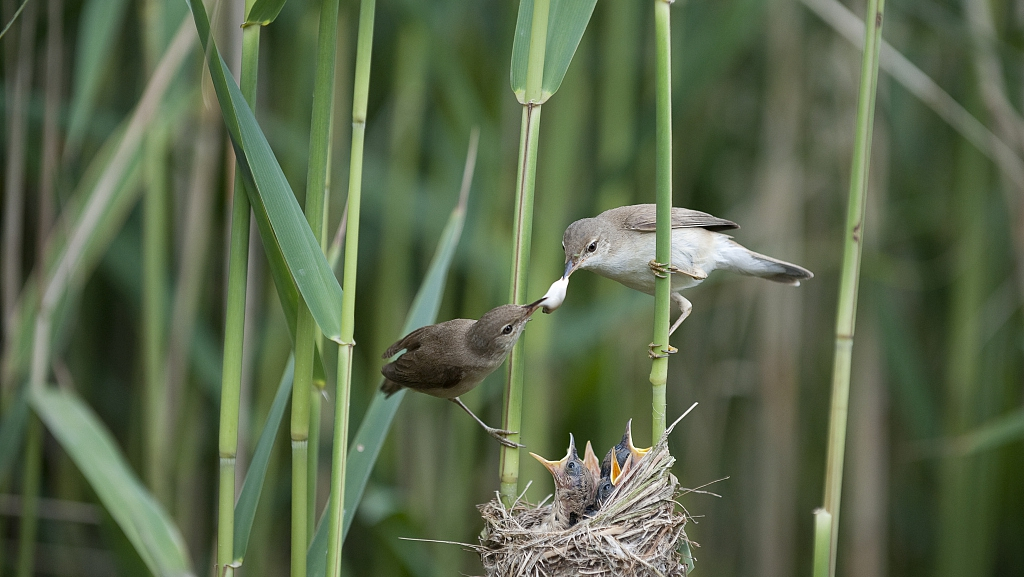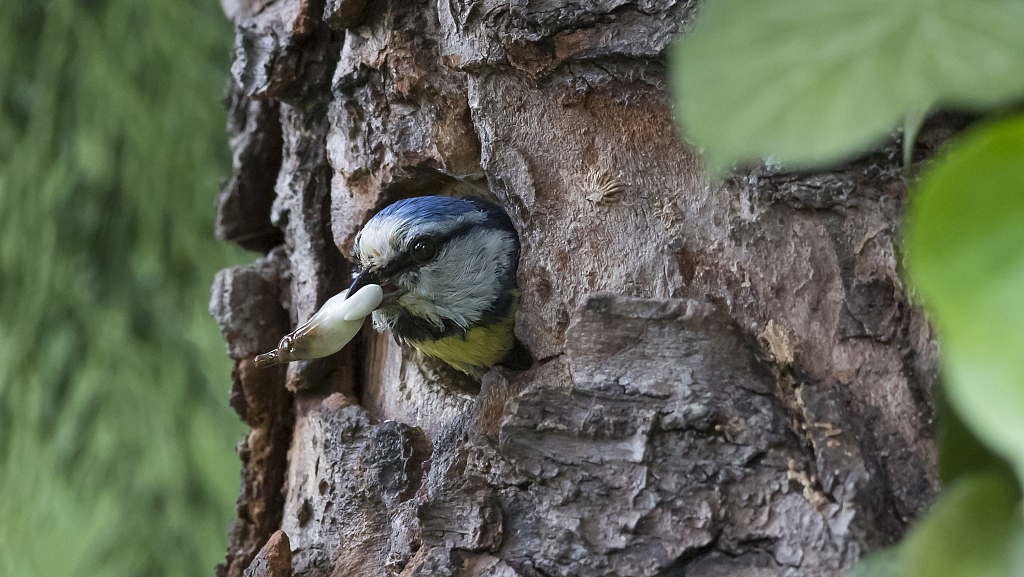00:35

The process of feces disposal for some clean birds is carefully orchestrated, requiring cooperation between adults and their fledglings.
For the adults' part, they feed the fledglings and wait for them to poo, which usually happens within seconds after the feeding. If not, they may prod around the youngster's rear to stimulate excretion. The sacs are then carried off and discarded some distance away.
For the youngsters' part, they produce fecal sacs which wrap the feces up in a thin piece of skin, so that their parents can remove them more easily.

Yellow-bellied tit holding fecal sac in beak. /VCG Photo
Yellow-bellied tit holding fecal sac in beak. /VCG Photo
Feces disposal during the nesting period is a way some birds can keep their nests clean and thus make sure the young stay healthy and keep their nests hidden.
It is most prevalent in passerines and their close relatives, which have young that remain in the nest for longer periods.
Some adult birds may swallow the fecal sac, and there has been evidence showing that they could gain some nutritional benefits by doing so.
(Cover image via VCG, video shot by Wan Zhongyi)
(If you want to contribute and have specific expertise, please contact us at nature@cgtn.com.)